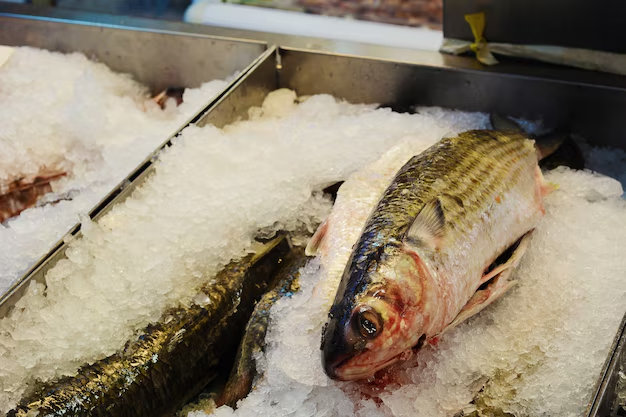How Long Can You Keep Fresh Fish in the Refrigerator?
When it comes to food storage, knowing how long you can safely keep fresh fish in the refrigerator is crucial to maintaining both nutritional value and flavor. Fresh fish is a delicious and healthy choice for many meals, but it’s no secret that it’s also highly perishable. Keeping fish fresh in your refrigerator requires an understanding of storage techniques and the ideal timeframe in which to consume it. This article will explore the best practices for refrigerating fresh fish and delve into related food storage tips to ensure your seafood dishes are not just tasty, but also safe to eat.
The Shelf Life of Fresh Fish: What to Expect
Fresh fish generally lasts a couple of days in the refrigerator. For optimal freshness, it's recommended to consume fish within one to two days of purchase. However, the exact time frame can vary based on several factors, including the type of fish, its freshness at the time of purchase, and how it's stored.
Factors Affecting Fish Freshness
- Type of Fish: Oily fish like salmon and mackerel tend to spoil faster than leaner fish such as cod or haddock.
- Original Freshness: Fish that's already aged a bit before purchase will have a shorter refrigeration life.
- Storage Conditions: Proper storage in the refrigerator can extend freshness, while poor storage practices may lead to quicker spoilage.
Best Practices for Storing Fresh Fish in the Refrigerator
1. Preparation and Immediate Refrigeration
Once you purchase fresh fish, it should be refrigerated as soon as possible. Here’s how to ensure it stays fresh:
- Keep It Cold: Fish should be stored at a temperature of 32°F to 40°F. Use a thermometer to check your refrigerator's temperature settings to prevent spoilage.
- Store on Ice: Place fish on a bed of ice in a moisture-proof container if possible. The ice helps keep it at a cold, consistent temperature.
2. Packaging and Wrapping
- Use Airtight Containers: Store fish in airtight containers or tightly wrap it to minimize exposure to air, which can cause oxidation and spoilage.
- Avoid Direct Contact with Air: Wrapping fish in plastic wrap or aluminum foil can prevent air exposure.
3. Placement in the Refrigerator
- Coolest Part of the Fridge: Store fish in the coldest part of the refrigerator, often near the back or the bottom shelf.
- Separate from Other Foods: Place fish away from other foods to prevent cross-contamination. Raw fish should be separate from ready-to-eat food.
4. Check for Freshness
Before cooking, always check for signs of spoilage:
- Odor: Fresh fish should have a mild scent. A strong, fishy odor indicates spoilage.
- Texture: The fish should feel firm to the touch and not slimy.
- Color: Look for vibrant colors and avoid dull or faded appearances.
Using Leftovers: Extending Fish Shelf Life
Perhaps you’ve cooked a bit more than you needed. Here’s how to store cooked fish effectively:
- Refrigerate Quickly: Place cooked fish in the fridge within two hours of cooking.
- Use Within Days: Cooked fish can generally be kept for three to four days in the refrigerator.
- Store in Airtight Containers: Just as with fresh fish, use airtight containers to preserve the quality.
Freezing: Prolonging Freshness Beyond Refrigeration
When you need to extend the life of your fish beyond a couple of days, freezing becomes an important option.
Steps for Freezing Fresh Fish
- Pre-Freeze Preparation: Clean and pat dry the fish before freezing.
- Use Proper Materials: Wrap fish tightly in freezer paper or heavy-duty aluminum foil, or use freezer bags to prevent freezer burn.
- Label and Date: Always label the fish with the freezing date to keep track of how long it’s been stored.
How Long Can Fish Last in the Freezer?
Fish can be kept in the freezer for an extended period:
- Fatty Fish: Such as salmon and trout, stays fresh for up to two to three months.
- Lean Fish: Such as cod and pollock, can last for up to six months.
Related Topics: General Food Storage Tips
Taking the time to learn broader food storage best practices can enhance your overall food safety and kitchen efficiency.
Organizing Your Refrigerator
- Temperature Settings: Ensure the refrigerator is set to around 37°F, which is generally ideal for most perishable foods.
- Regular Clean-Outs: Make it a habit to regularly check and clean out your fridge to stop the accumulation of expired foods.
- Use Clear Storage: Clear, stackable containers can help efficiently use space and allow for easy spotting of what’s inside.
Extending the Freshness of Other Perishables
- Vegetables: Wrap leafy greens in a kitchen towel before storing them in the fridge to reduce moisture.]
- Fruits: Some fruits, like bananas, emit ethylene gas and should be stored separately from others that can spoil quickly.
Summary: Keeping Your Fish Fresh & Delicious
To keep your fresh fish as appetizing as the day it was bought, remember these key steps:
- 🐟 Immediate Refrigeration: Store fresh fish in the fridge right away, ideally on a bed of ice in a moisture-proof container.
- 🧊 Optimal Temperature: Keep the refrigerator between 32°F to 40°F, and use ice to maintain a stable temperature.
- 🥡 Proper Storage: Utilize airtight packaging to limit air exposure and prevent spoilage.
- 🔍 Check Before Use: Always inspect fish for smell, texture, and color before cooking.
- ⏳ Use Cooked Leftovers Promptly: Store in airtight containers and aim to use within three to four days.
- ❄️ Freeze for Longevity: Properly prepared fish can be frozen to extend freshness significantly.
By following these tips, you’ll not only maximize the shelf life of your fresh fish but also continue to enjoy its rich flavors and benefits. Balancing freshness with storage convenience enables you to make the most out of your seafood purchases without sacrificing quality or safety.
